The Amish and Mennonites are often mistaken for each other due to their similarities. Both are conservative religious groups with distinct traditional attire. However, they have separate histories and identities. In this article, we will dive into the details of their beliefs, practices, and ways of life to understand the differences and similarities between the Amish and Mennonites.
Table of Contents
Key Takeaways:
- The Amish and Mennonites share similarities in their conservative religious beliefs and traditional attire.
- However, they have separate histories and identities that shape their distinct cultures and lifestyles.
- The Amish prioritize simplicity and separation from modernity, while the Mennonites embrace a range of practices and engage more openly with the world.
- Understanding the differences between the Amish and Mennonites enhances appreciation for the diversity within religious communities.
Who Are the Mennonites?
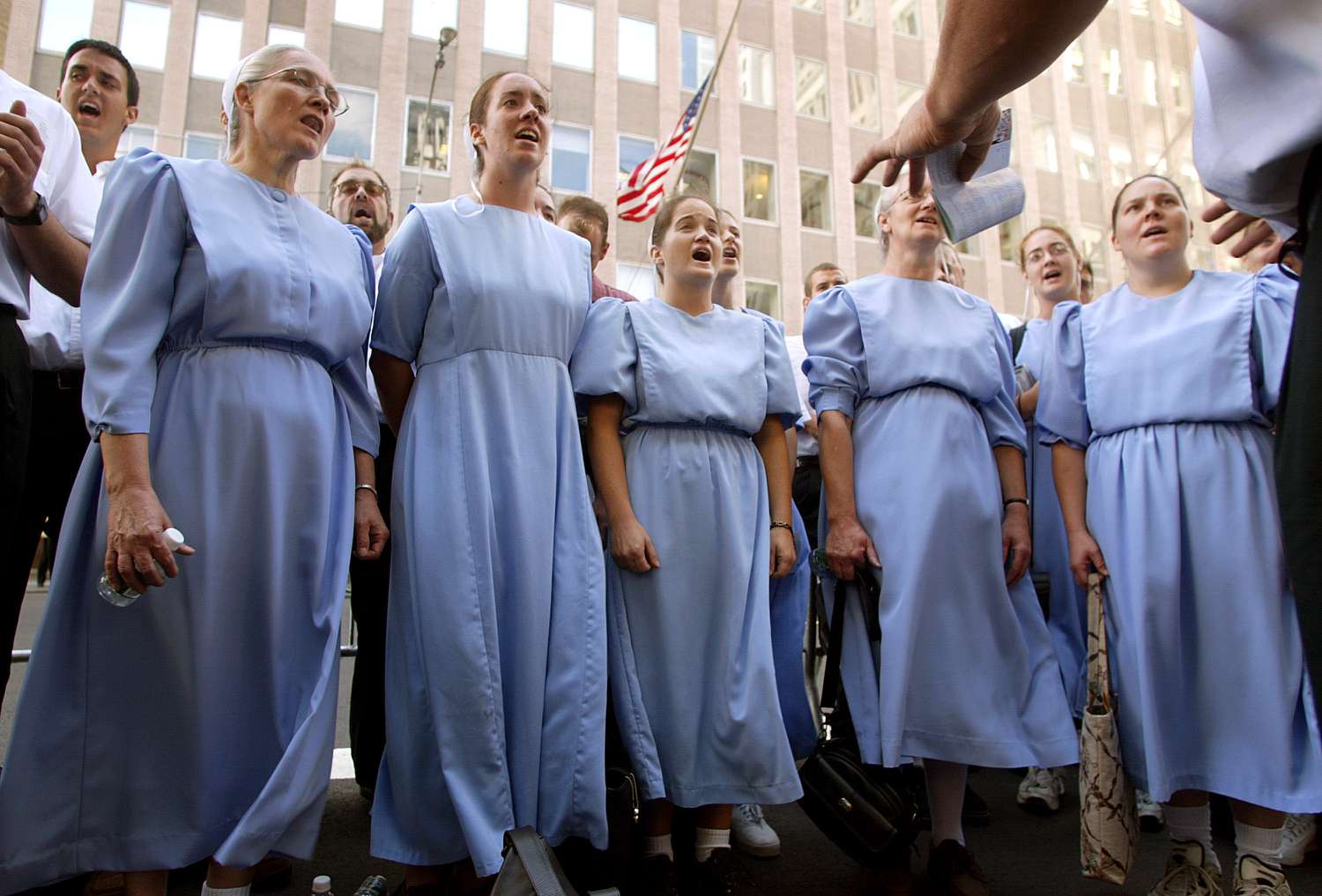
The Mennonites are a Christian sect that originated in Europe during the 16th-century Protestant Reformation. Founded by Menno Simons, a Dutch priest who converted to Anabaptism, the Mennonites have a rich history and a global presence today. With a strong emphasis on faith, peace, and simplicity, the Mennonite community has evolved and diversified over time.
Unlike the Amish, the Mennonite Church was founded first and shares a common source of origin. Mennonites believe in the teachings of Jesus Christ and follow the New Testament as their guide for life. They prioritize living a life of service, love, and nonviolence, striving to bring peace and justice to the world.
The Diversity of Mennonite Beliefs, Culture, and Community
Mennonites have formed various groups and communities worldwide, each with its own unique practices and traditions. These differences can be seen in their beliefs, worship styles, and engagement with the modern world.
Mennonite beliefs may vary depending on the specific community, but some common principles include adult baptism, pacifism, and communal living. Mennonites place a strong emphasis on community support and often engage in social justice initiatives, humanitarian work, and missionary efforts.
Mennonite culture is rich and diverse, encompassing a wide range of traditions that reflect their heritage and values. These traditions may include traditional music, dance, food, and art. Mennonites are known for their craftsmanship in areas such as woodworking, furniture making, and quiltmaking, reflecting their commitment to simplicity, beauty, and functionality.
The Mennonite community is a close-knit and supportive network that provides a sense of belonging and spiritual guidance. They gather for worship, fellowship, and community events, often fostering strong connections that extend beyond their immediate geographical locations.
How are Mennonites Different from the Amish?
While the Amish and Mennonites share similar belief systems, there are distinct differences between them. One significant difference is their approach to technology and modernity. The Amish reject modern conveniences, while many Mennonite groups embrace certain technologies. For example, some Mennonite communities may use electricity, own cars, or have internet access, while the Amish rely on traditional, non-electric methods of living.
Another difference between the two groups is their dress code. The Amish adhere to a more conservative attire, with plain and modest clothing that reflects their commitment to simplicity and humility. On the other hand, Mennonites have a broader range of styles and may dress more similarly to mainstream society while still maintaining a modest appearance.
Transportation practices also differ between the Amish and Mennonites. The Amish rely primarily on horse-drawn buggies as a means of transportation, which aligns with their rejection of modern technology. In contrast, Mennonites have more flexibility and may use motorized vehicles like cars and trucks for their daily transportation needs.
Quote:
The Amish and Mennonite communities both emphasize faith, peace, and simplicity, but their approaches to technology, dress code, and transportation set them apart.
Understanding these differences allows us to appreciate the unique paths each group takes in living out their beliefs and values. It is a reminder of the diversity within religious communities and the various ways in which individuals and groups interpret and practice their faith.
| Aspect | Amish | Mennonites |
|---|---|---|
| Technology | Reject modern conveniences | Embrace certain technologies |
| Dress Code | Conservative, plain, and modest attire | Varies across different Mennonite groups, with more flexibility |
| Transportation | Rely on horse-drawn buggies | Use motorized vehicles like cars and trucks |
These differences showcase the unique paths each group has taken while adhering to their core beliefs and values. It is important to recognize and respect these distinctions as we seek to learn more about the rich tapestry of religious traditions in our world.
Mennonite Traditions
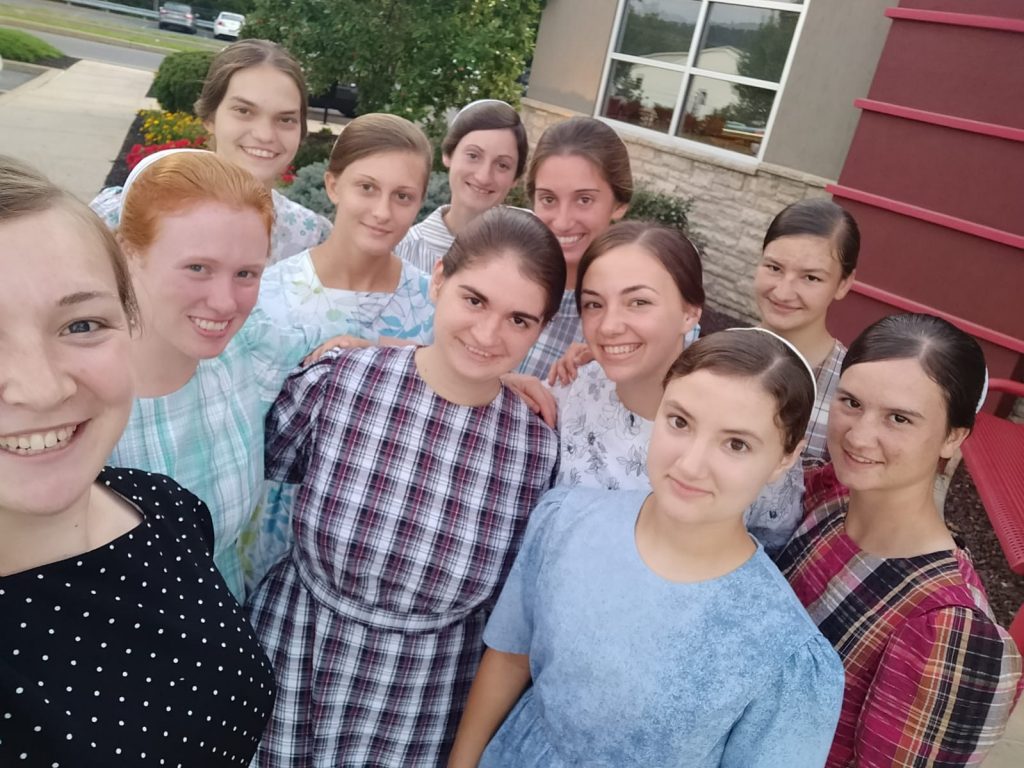
Mennonites have a rich heritage of traditions that have been passed down through generations. These traditions encompass various aspects of daily life, including crafts, cuisine, and celebrations. One prominent tradition among Mennonites is their skill in crafting handmade items, particularly in woodworking and sewing. This dedication to craftsmanship is a testament to their commitment to simplicity and attention to detail.
When it comes to woodworking, Mennonites excel in creating intricate and beautifully crafted furniture, often using traditional techniques that have been honed over centuries. Their expertise in woodworking is evident in the fine details and quality of the finished products. From hand-carved chairs to meticulously constructed cabinets, Mennonite craftsmen take great pride in their work.
In addition to woodworking, Mennonites are renowned for their craftsmanship in sewing and quiltmaking. The art of quilting has been a cherished tradition among Mennonite women, who create intricate and vibrant quilts that reflect their creativity and skill. These quilts often incorporate symbolic patterns and motifs that hold special meaning within the Mennonite community.
“Our crafts reflect our values of simplicity, craftsmanship, and community. Through our handmade creations, we strive to create beauty, provide for our families, and connect with our heritage.”
Another traditional craft that is deeply ingrained in Mennonite culture is basket weaving. Mennonite basket weavers are known for their intricate and sturdy designs, using a variety of materials such as wood, reeds, and vines. These hand-woven baskets serve both practical and decorative purposes, with each design carrying its own unique symbolism.
Mennonite Crafts
| Craft | Description |
|---|---|
| Woodworking | Mennonites are skilled in creating handmade furniture, using traditional techniques and paying attention to detail. |
| Sewing and Quiltmaking | Mennonite women are known for their expertise in sewing and quiltmaking, creating intricate and vibrant quilts. |
| Basket Weaving | Mennonite basket weavers create beautiful and sturdy hand-woven baskets using various materials. |
These crafts not only provide a livelihood for many Mennonites but also serve as a way to connect with their heritage, preserve their traditions, and pass on their skills to the next generation. Through their crafts, Mennonites embody the values of simplicity, creativity, and community that are at the core of their faith.
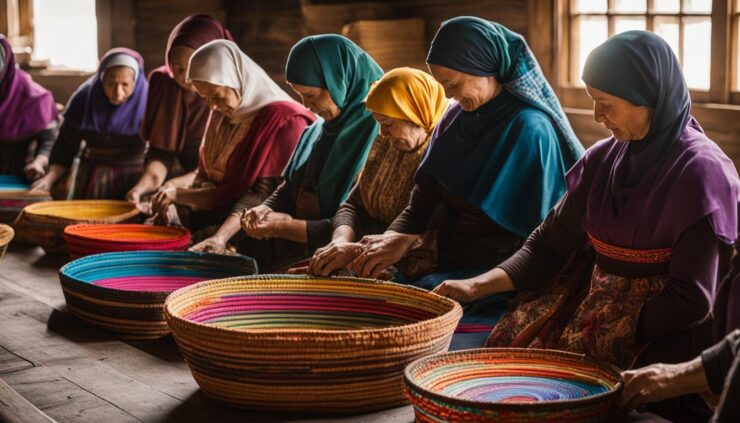
How to Recognize Mennonites?
Recognizing Mennonites can be a fascinating challenge due to the diversity within their communities. While there is no definitive visual representation of Mennonites, certain characteristics can help you identify them. One notable aspect is their dress. In more orthodox Mennonite communities, both men and women dress modestly, often in plain clothing that adheres to traditional styles. Women may wear head coverings, such as bonnets or prayer veils, while men typically wear hats.
Mennonite hairstyles and head coverings are similar to those of the Amish, with women often wearing head coverings as a symbol of modesty and piety. However, it is important to note that not all Mennonite groups adhere strictly to these dress codes. Some Mennonite communities have adopted more modern styles of dress, which can make recognition more challenging.
Transportation practices also differ among Mennonites. While many Amish communities rely on horse-drawn buggies as their primary mode of transportation, Mennonites have more flexibility when it comes to using motorized vehicles. Some Mennonites freely use cars and other modern transportation methods, while others may choose to use a mix of horse-drawn buggies and motor vehicles. It ultimately depends on the specific beliefs and practices of each individual Mennonite group.
Quotes:
“Mennonites embrace a range of practices, and their appearance varies greatly depending on the community.” – Mennonite scholar
“While recognizing Mennonites may seem challenging at first, understanding their diverse traditions and dress codes can make the task easier.” – Cultural anthropologist
In summary, recognizing Mennonites requires an understanding of their diverse traditions and dress codes. Paying attention to clothing styles, head coverings, and transportation practices can provide clues to someone’s Mennonite identity. However, it’s important to remember that not all Mennonite communities adhere strictly to traditional appearances, as some have embraced more modern ways of dress and transportation.
Schooling and Engagement with the World
Education plays a significant role in shaping the lives of both the Amish and Mennonite communities. While their approaches to schooling differ, they share a commitment to providing their members with a strong foundation in faith and life skills.
Amish schooling is centered around their belief in the importance of humility and simplicity. Amish children attend one-room schoolhouses, where they are taught by Amish teachers until the eighth grade. The curriculum focuses on basic reading, writing, and arithmetic, with a strong emphasis on practical skills that will be useful in their future roles within the community. Beyond the eighth grade, formal education is discouraged as it is seen as a potential source of worldly influences that could disrupt their way of life.
Mennonite schooling, on the other hand, offers a broader range of educational options. While some Mennonite children attend public schools, many communities have their own private schools where they can receive both religious and secular education. Mennonite schools often extend education beyond the eighth grade, with some offering high school and even college-level courses. This emphasis on education reflects the Mennonite belief in the importance of engaging with the world while maintaining their religious values.
| Amish Schooling | Mennonite Schooling | |
|---|---|---|
| Curriculum | Basic reading, writing, arithmetic, practical skills | Religious and secular education, potential for higher education |
| Educational Duration | Until 8th grade | Varies, can include high school and college-level courses |
| Engagement with the World | Emphasizes separation from worldly influences | Promotes engagement with the world while maintaining religious values |
When it comes to engagement with the world, the Amish and Mennonites have different approaches. The Amish prioritize separation and limited interaction with non-Amish individuals, emphasizing the importance of preserving their distinct way of life. They believe that too much engagement with the outside world can lead to spiritual and moral corruption.
In contrast, Mennonites generally have a more open engagement with society. They believe in actively participating in their local communities and strive to make a positive impact. This can manifest in various ways, such as volunteering, participating in civic organizations, and advocating for social justice causes. Mennonites value their faith being lived out in practical ways, both within their own communities and in the larger world.
While the Amish and Mennonites have different approaches to schooling and engagement with the world, both are driven by their commitment to living out their faith in their daily lives. These differences contribute to the unique identities and practices of each community, highlighting the rich diversity within the broader Anabaptist tradition.
Amish vs. Mennonite: Missionary Work and Proselytizing
To truly understand the differences between the beliefs and practices of the Amish and Mennonites, it is important to examine their approach to missionary work and proselytizing. While both groups believe in the value of good works, their methods and priorities differ significantly.
The Amish, known for their commitment to simplicity and separation from modernity, do not actively engage in missionary work or proselytizing. Instead, they focus their charitable efforts within their own communities, supporting their members in times of need and working together to maintain their way of life.
On the other hand, the Mennonites actively participate in missionary initiatives worldwide, spreading their message of faith and peace beyond their own communities. Mennonite missionaries work to provide aid, education, and support to those in need, both domestically and internationally. Their commitment to service and their belief in sharing their faith with others drive their mission work, making them a visible presence in many different parts of the world.
“We believe that our faith is something worth sharing with others and that by doing so, we can make a positive impact on the world around us.” – Mennonite Church spokesperson
While the Amish may not actively proselytize or carry out missionary work, their commitment to living a virtuous and faithful life is often seen as a testament to their beliefs. By embodying their values in their daily actions, the Amish strive to be an example to others and draw people to their way of life through their quiet dedication and strong community bonds.
In summary, the Amish and Mennonites differ in their approach to missionary work and proselytizing. While the Amish focus on their own communities and prioritize maintaining their way of life, the Mennonites actively engage in spreading their faith and providing aid to those in need. These differences reflect the unique beliefs and values of each group, highlighting the diversity within religious communities.
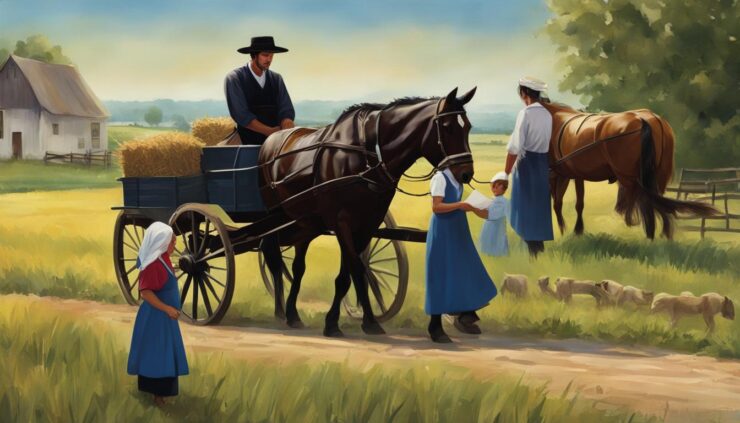
Table: A Comparison of Amish and Mennonite Beliefs and Practices
| Beliefs and Practices | Amish | Mennonite |
|---|---|---|
| Missionary Work | No active engagement | Active participation worldwide |
| Proselytizing | No active proselytizing | Spread their faith beyond their own communities |
| Charitable Efforts | Focus on supporting their own communities | Provide aid and education to those in need |
Note: The table above provides a simplified comparison of the beliefs and practices related to missionary work and proselytizing between the Amish and Mennonites. It is important to recognize that there is variation within these groups, and individual beliefs and practices may differ.
Religious Gatherings
Amish and Mennonite religious gatherings play a central role in their respective communities. These gatherings serve as opportunities for worship, communal bonding, and spiritual growth. While both groups have similar intentions, there are distinct differences in the way these gatherings are conducted.
Amish Church Services
Amish church services are typically held in private homes or barns, rotating between different families within the community. The services are conducted in a plain and simple manner, reflecting the Amish commitment to humility and modesty. Amish church services prioritize communal worship, with members gathering to sing hymns, pray, and listen to plain preaching from a designated minister or bishop.
Mennonite Church Services
Mennonite church services, on the other hand, are often held in church buildings specifically designated for worship. These services usually have a more structured format and can vary between different Mennonite groups. Mennonite church services may include elements such as music performances, readings from the Bible, sermons, and participation from the congregation in the form of prayers and testimonies. The focus is on creating a welcoming environment for individuals to express their faith and engage in meaningful worship.
| Amish Church Services | Mennonite Church Services |
|---|---|
| Conducted in private homes or barns | Held in designated church buildings |
| Plain and simple worship | Varied formats and structures |
| Communal singing, prayer, and plain preaching | Performances, readings, sermons, and congregational participation |
These differences in religious gatherings highlight the distinct approaches to worship and community engagement within the Amish and Mennonite traditions. Both are rooted in faith and a desire for spiritual connection, but express them in different ways.
Conclusion
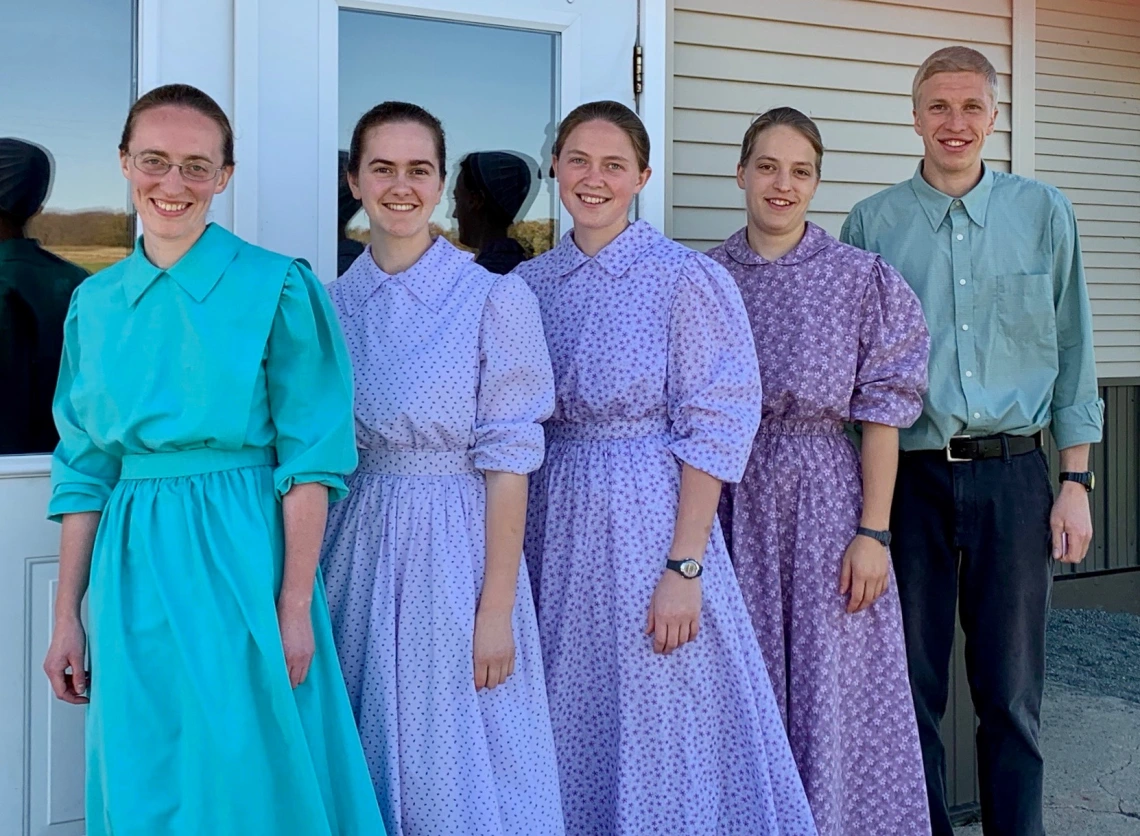
In conclusion, the Amish and Mennonites may share similarities in their conservative religious beliefs and traditional attire, but they have distinct differences that shape their identities. The Amish prioritize simplicity and separation from modernity, rejecting modern conveniences and relying on horse-drawn buggies for transportation. On the other hand, Mennonites have a more flexible approach to technology and transportation, embracing certain modern conveniences and using motorized vehicles.
Another notable difference is the educational system. Amish children attend their own schools and typically receive schooling only until the eighth grade, while Mennonites have a range of schooling options that include public schools and their own educational institutions. Additionally, the Amish focus their charitable works within their own communities and do not actively seek to convert others, whereas Mennonites engage in missionary initiatives worldwide and spread their message of faith and peace.
By understanding these differences, we gain a deeper appreciation for the diversity of beliefs and traditions within religious communities. The Amish and Mennonites both stem from shared roots and values, yet their unique practices and approaches to engagement with the world set them apart. Appreciating the nuances of these two communities helps foster respect and understanding for the rich tapestry of religious diversity that exists within our society.
Also you can read Moana 2.
FAQ
What is the difference between the Amish and Mennonites?
The Amish and Mennonites have similarities in their beliefs and traditional attire, but they have separate histories and identities. The Amish reject modern conveniences, while some Mennonite groups embrace certain technologies. The Amish adhere to a more conservative dress code compared to the varying styles among Mennonites. They also have different transportation practices, with the Amish relying on horse-drawn buggies and the Mennonites using motorized vehicles.
What are some shared traditions between the Amish and Mennonites?
Both the Amish and Mennonites value simplicity and traditional crafts. They excel in woodworking, furniture making, sewing, quiltmaking, and basket weaving. These traditions are an important part of their cultural heritage.
How can I recognize Mennonites?
Recognizing Mennonites can be challenging as their appearance varies depending on the community. In more orthodox communities, their dress is similar to the Amish, with modest clothing and head coverings. However, some Mennonite groups have adopted more modern styles of dress. Mennonite hairstyles and head coverings are similar to the Amish, with women often wearing bonnets. The transportation practices also differ, with many Mennonites freely using motorized vehicles.
What is the difference in education between the Amish and Mennonites?
Amish children primarily attend their own Amish schools and are not educated beyond the eighth grade. In contrast, Mennonites have a range of schooling options, including public schools and their own educational institutions.
How do the Amish and Mennonites engage with the world?
The Amish prioritize separation and limited interaction with non-Amish individuals. On the other hand, Mennonites tend to have a more open engagement with society.
What is the difference in missionary work between the Amish and Mennonites?
Mennonites actively engage in missionary initiatives worldwide, spreading their message of faith and peace. The Amish, however, focus their charitable works within their own communities and do not actively pursue converting others to their faith.
How do religious gatherings differ between the Amish and Mennonites?
Amish religious gatherings typically take place in homes or barns and emphasize communal worship, singing, and plain preaching. Mennonite services are often held in church buildings, and their worship may involve more varied formats and individual expression.
Source Links
- https://www.amishgazebos.com/amish-or-mennonite/
- https://www.amishbaskets.com/blogs/blog/mennonite-vs-amish
- https://www.snydersfurniture.com/blogs/news/the-key-differences-between-amish-and-mennonites
Related Posts:
- Understanding Your Rights and Options Under the IRS…
- Can C4 Energy Drink Make You Itchy? Understanding…
- Blood vs. Crips: Differences in the Gang Rivalry
- Blood vs. Crips ─ Exploring the Differences Between…
- Incall vs. Outcall: Exploring the Differences in…
- W2S Net Worth 2024 | Insights into His Influential…













